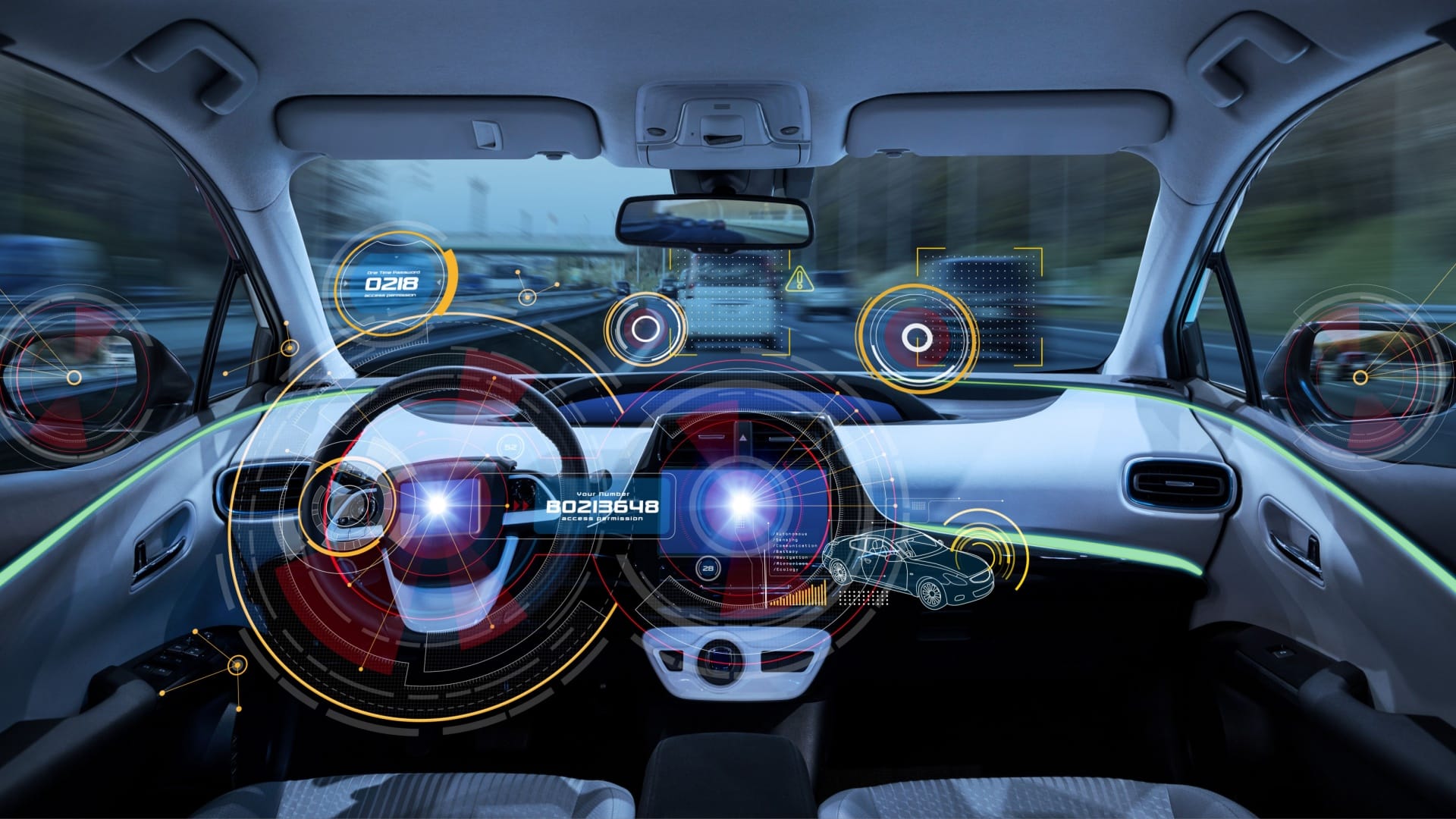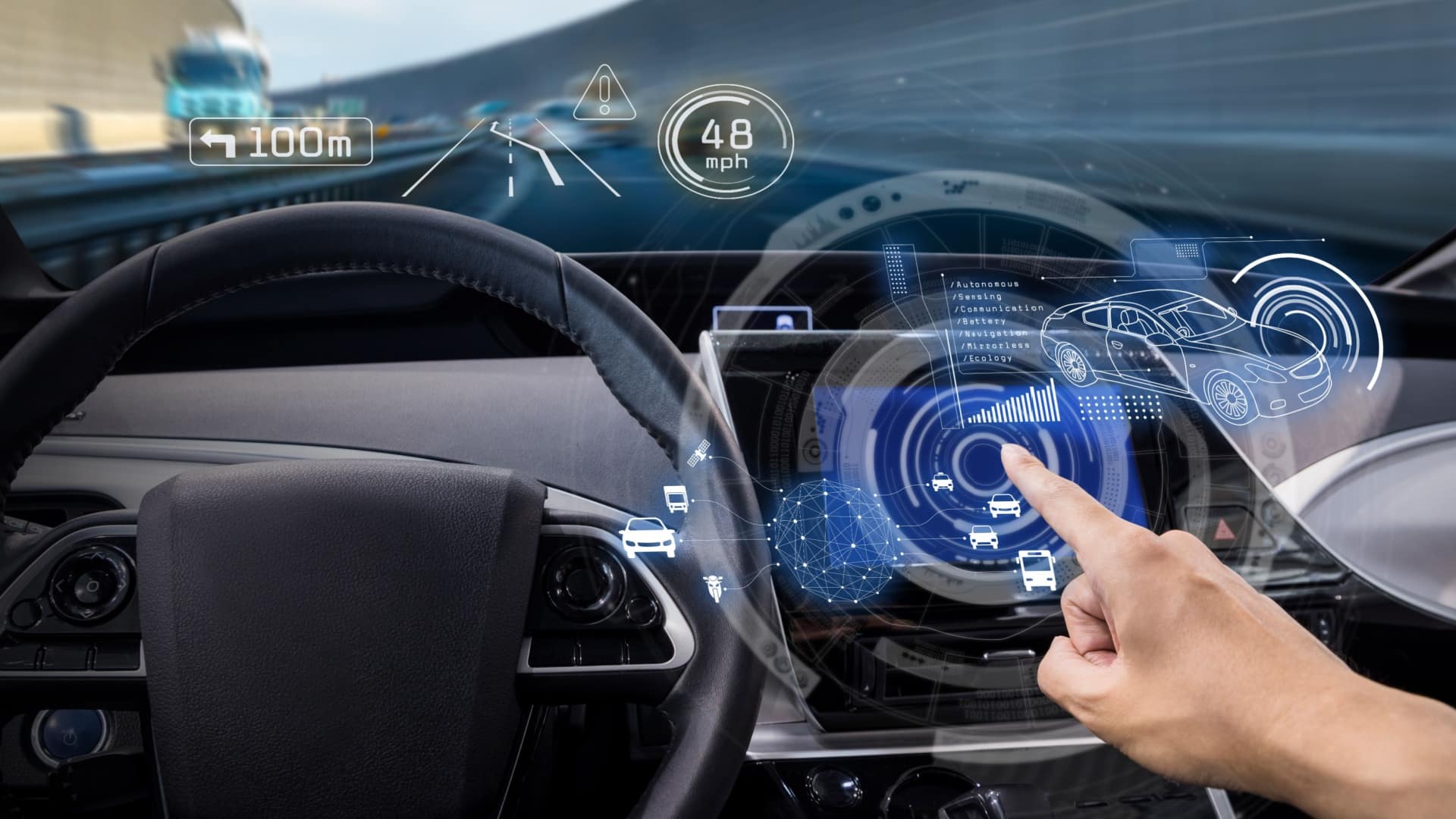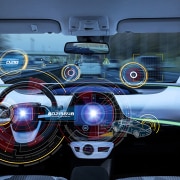Revolutionizing the Drive: The Fusion of Smart Cockpits and IVI Systems
The evolution of automotive technology has transformed not only the driving process but also the overall vehicle experience. At the heart of this transformation is the smart cockpit, an embodiment of advanced technology that redefines driving by integrating critical systems such as Heads-Up Displays (HUD), digital instrument clusters, and In-Vehicle Infotainment (IVI). This article delves into how the smart cockpit is becoming the central theme of modern automotive design, emphasizing its role in creating a distraction-free and intuitive driving environment.
Understanding the Smart Cockpit

- Digital Clusters and Displays: Moving beyond traditional analog gauges, today’s digital clusters are sophisticated, high-resolution screens capable of being customized to display essential information such as speed, fuel levels, and navigation details. These digital displays are designed to ensure that all necessary driving data is immediately visible, significantly reducing the driver’s cognitive load and enhancing focus. The adaptability of these clusters allows for a personalized dashboard that can change based on the driver’s preferences or driving conditions, which is critical in modern driving environments.
- Heads-Up Displays (HUD): HUD technology is a game-changer in terms of safety and convenience. By projecting vital driving information directly onto the windshield, HUDs allow drivers to monitor speed and navigation prompts, and receive safety alerts without ever needing to look away from the road. This technology not only minimizes distractions but also plays a crucial role in maintaining continuous driver awareness and enhancing overall vehicle safety. The integration of HUDs into the smart cockpit represents a significant leap forward in creating a more intuitive and less distracting driving experience.
- In-Vehicle Infotainment (IVI) Systems: IVI systems, integrated within the digital instrument clusters, are a testament to the smart cockpit’s advanced functionality. These systems are designed to be an integral yet non-intrusive part of the cockpit, supporting a wide range of services including audio and video streaming, navigation, and hands-free connectivity with external devices. IVI systems are controlled through intuitive interfaces such as touch gestures and voice commands, making them easier and safer to use while driving. Their integration helps maintain the aesthetic and functional balance within the cockpit, ensuring that while they provide numerous features, they do not detract from the essential driving-focused elements of the cockpit.
Together, these technologies form the backbone of the smart cockpit, enhancing the driver and passenger experience by integrating critical information with entertainment and connectivity features. The smart cockpit thus not only simplifies the management of vehicle functionalities through its centralized controls but also elevates the overall in-car experience, making vehicles smarter, safer, and more enjoyable.

Advantages of Smart Cockpit Technologies
The integration of cutting-edge technologies within the smart cockpit establishes it as the central hub for vehicle connectivity, profoundly streamlining interactions between the vehicle’s internal systems and external devices. This comprehensive integration not only simplifies vehicle operation but also significantly enhances the overall driving experience in several key ways:
- Simplifying System Integration: The smart cockpit centralizes controls and information, merging various functionalities into a single, cohesive system. This consolidation reduces the physical and mental effort required by the driver to operate different vehicle systems, from climate control to multimedia and navigation, making the driving experience smoother and significantly safer. By reducing the number of separate controls and interfaces, drivers can focus more on the road and less on adjusting vehicle settings, thus decreasing the potential for distraction.
- Enhancing Safety and Navigation: The smart cockpit design also integrates ADAS, which enhances vehicle safety through features such as collision detection, lane-keeping assistance, and automatic braking. These systems utilize a variety of sensors and cameras to monitor the vehicle’s surroundings, provide real-time feedback, and actively intervene when necessary to prevent accidents. Additionally, the smart cockpit employs real-time traffic updates and dynamic navigation systems to optimize route planning, significantly improving driving efficiency and reducing the likelihood of delays and accidents associated with unexpected traffic conditions.
- Improving Connectivity and Personalization: The smart cockpit extends connectivity beyond the vehicle to include smartphones and smartwatches creating a seamless integration with the user’s digital life. This connectivity enables drivers and passengers to adjust vehicle settings such as seat positioning, steering wheel height, and ambient lighting to their personal preferences, which can be saved and activated for specific drivers. Furthermore, this extensive connectivity allows for remote interactions, such as pre-setting the vehicle’s temperature or checking vehicle status via a smartphone app, enhancing convenience and personal comfort for each journey.
Overall, smart cockpit technologies significantly enrich the driving experience by making it safer, more connected, and highly personalized. These technologies not only cater to the current needs of drivers and passengers but are also adaptable to future advancements in automotive technology, ensuring that vehicles continue to evolve as responsive and interactive environments on the road.
Exploring the Future of Smart Cockpit
As we look toward the horizon of automotive technology, the smart cockpit stands poised to redefine vehicular interaction and connectivity further. The future of smart cockpits focuses on enhancing the integration of technology to deliver even more personalized, intuitive, and responsive driving experiences. This evolution will be characterized by several key developments:
- Advanced Integration of Artificial Intelligence (AI): Future smart cockpits will leverage AI to a greater extent, making them more adaptive and responsive to the driver’s habits and preferences. AI will facilitate smarter navigation systems that predict your preferred routes, analyze traffic patterns in real time, and suggest the most efficient paths. AI will also enable more sophisticated voice and gesture controls, allowing for more natural interactions within the vehicle, reducing driver workload, and enhancing focus on the driving task.
- Augmented Reality (AR) Enhancements: Augmented reality will play a significant role in the smart cockpit by overlaying critical information directly onto the driver’s field of vision, such as navigation aids, hazard detections, and more detailed environmental interactions. This technology will integrate more deeply with safety systems, providing not just alerts but also visual cues integrated into the real-world view, which will enhance situational awareness without overwhelming the driver.
- Greater Device Interconnectivity: The integration between the vehicle’s systems and external devices such as smartphones, smart homes, and even urban infrastructure will deepen. This will facilitate more seamless transitions between different aspects of a driver’s life, enabling the smart cockpit to automatically adjust settings based on calendar events, weather conditions, or even the driver’s physical condition monitored through connected health devices.
- Personalized Comfort and Settings: As the customization capabilities of smart cockpits evolve, they will offer an even more granular level of personalization. From automatically adjusting seats, climate, and lighting to match each driver’s profile, to tuning the vehicle’s handling characteristics according to driving style preferences, the smart cockpit will enhance comfort and driving pleasure.
- Eco-Friendly Innovations: Future smart cockpits will also incorporate more eco-friendly technologies, aligning with global trends towards sustainability. This includes more efficient energy management systems that optimize battery use in electric vehicles and features that support the broader adoption of eco-driving practices.
The future of the smart cockpit is not just about technological innovation; it’s about creating a holistic, immersive driving environment that is safer, more connected, and increasingly attuned to the needs and preferences of its occupants. As we advance, the smart cockpit will continue to be at the forefront of automotive design, pushing the boundaries of what vehicles can provide to their users.
Discover FIC’s Solutions for Smart Cockpits
As the automotive industry evolves, FIC is at the forefront of developing innovative smart cockpit solutions that redefine the driving experience. Our commitment to integrating cutting-edge technologies into the heart of the vehicle positions us as a leader in the future of automotive cockpits. FIC’s smart cockpit systems seamlessly blend advanced connectivity, enhanced safety features, personalized settings, and intuitive controls to deliver an unmatched driving experience. We invite you to explore how FIC is driving the future of automotive design. Our team of experts is dedicated to crafting solutions that not only meet but exceed the expectations of today’s tech-savvy drivers and passengers. Whether you are looking to enhance the safety features of your vehicles, integrate more comprehensive connectivity options, or provide a more personalized driving experience, FIC has the expertise and technology to bring your vision to life. For more information on our smart cockpit solutions and to discover how FIC can transform your automotive designs, visit our contact page. Join us in shaping a smarter, more connected automotive future.





